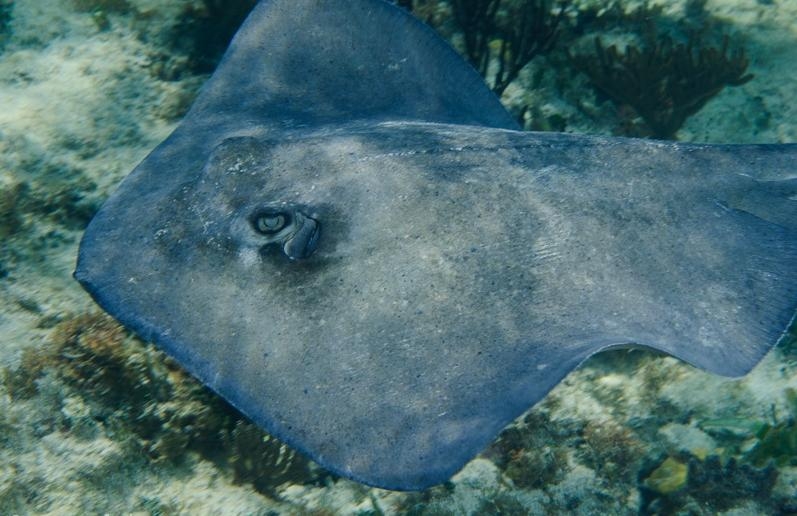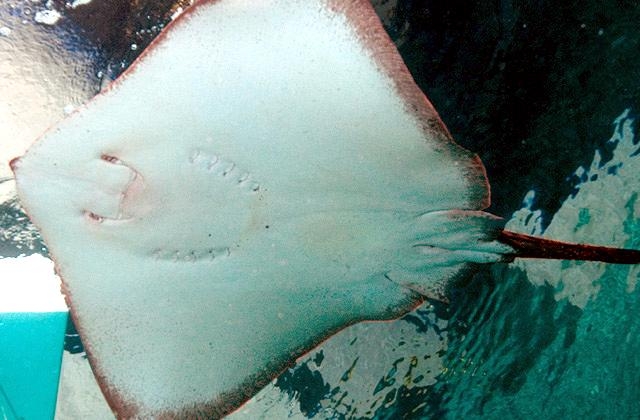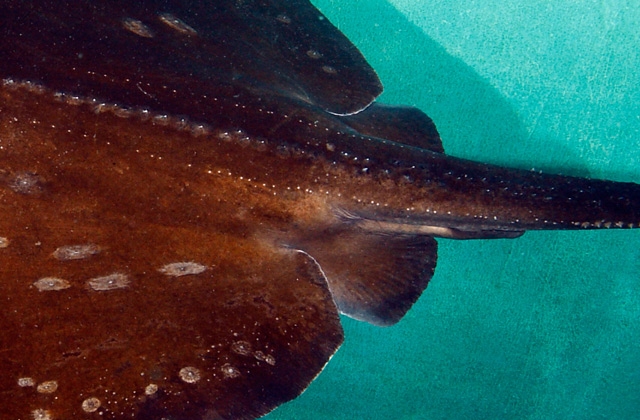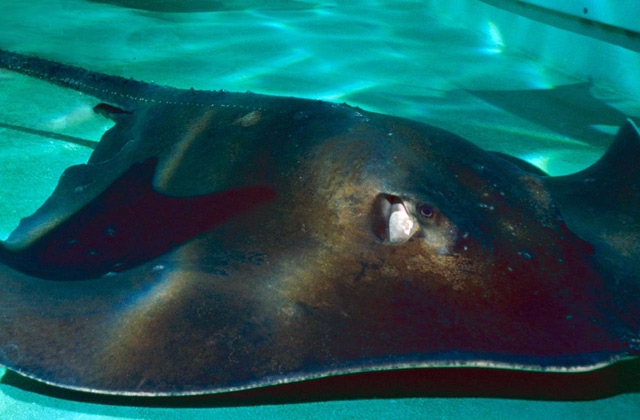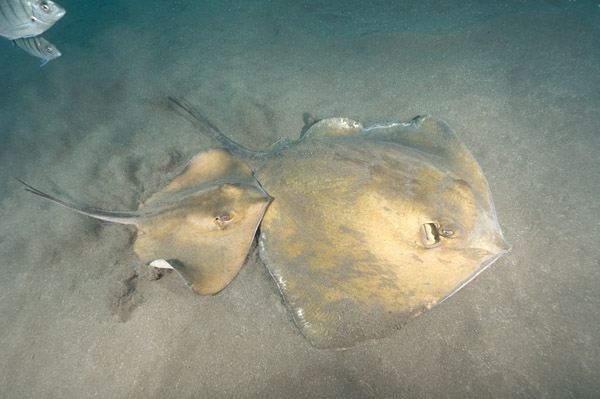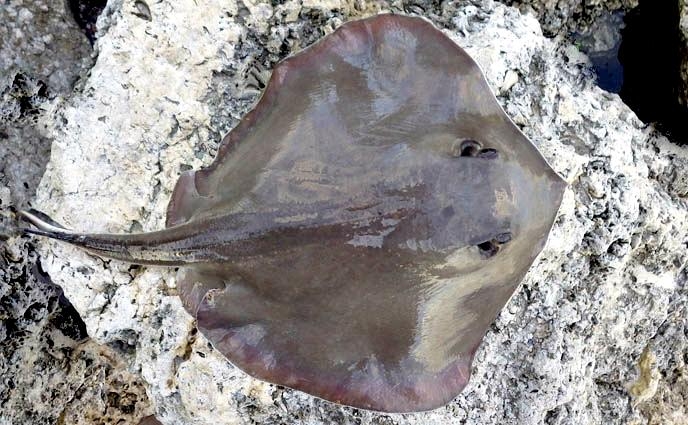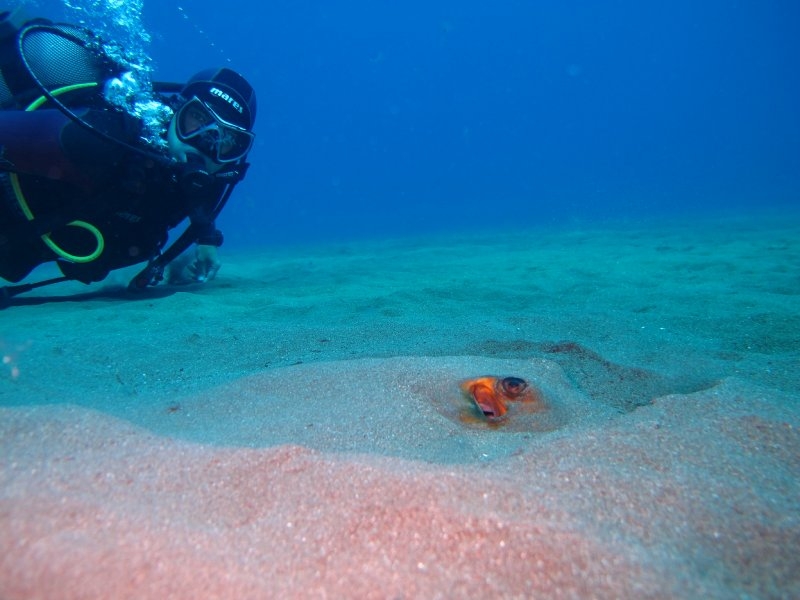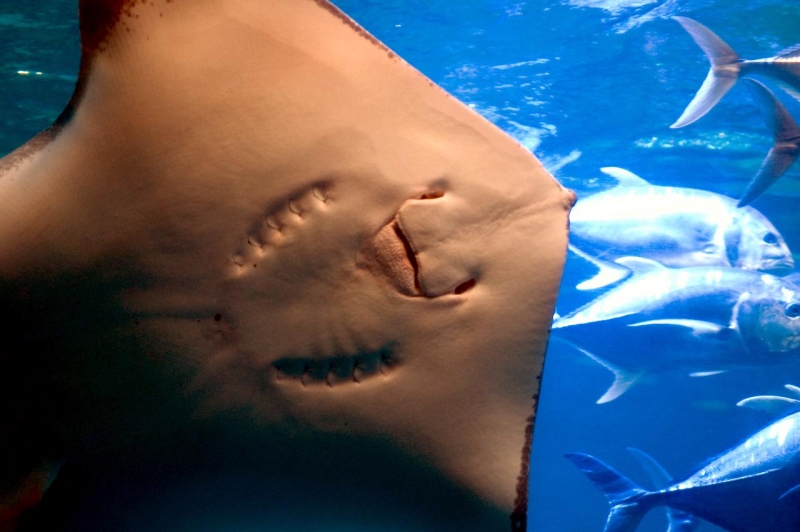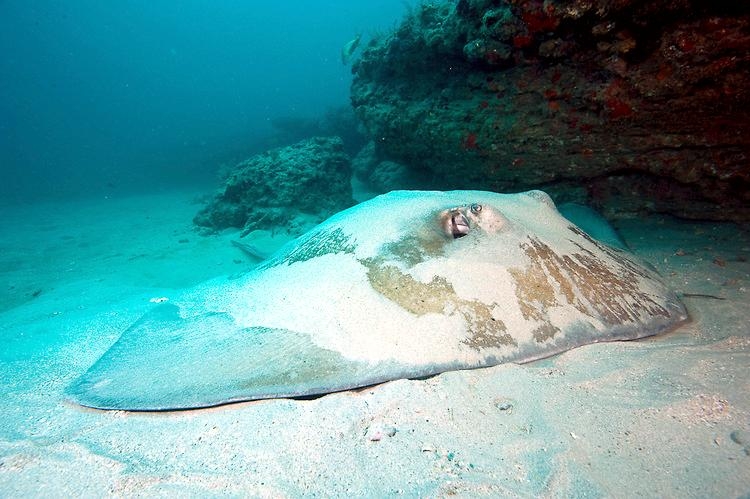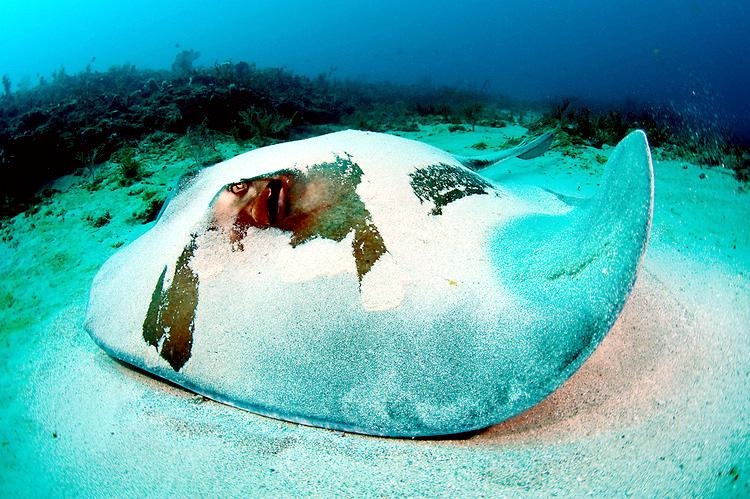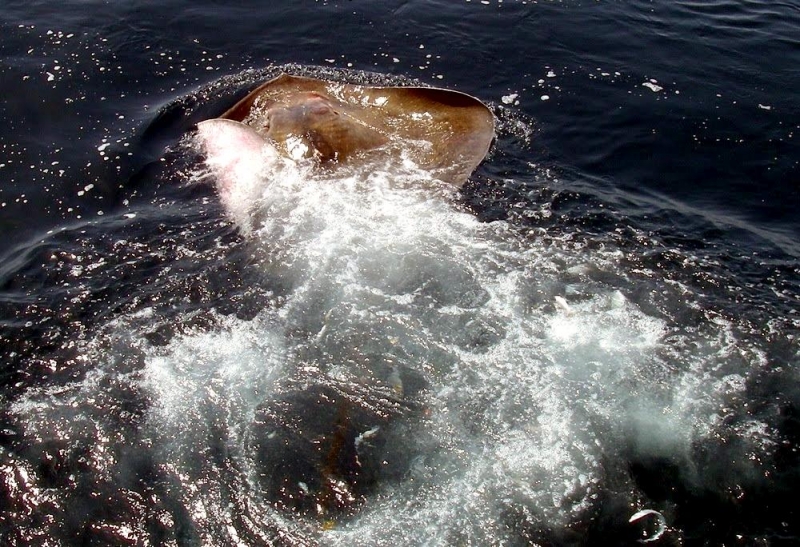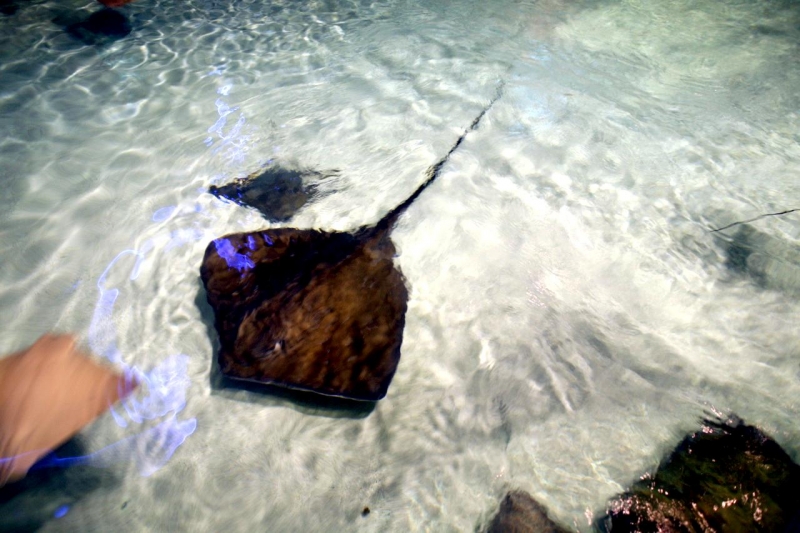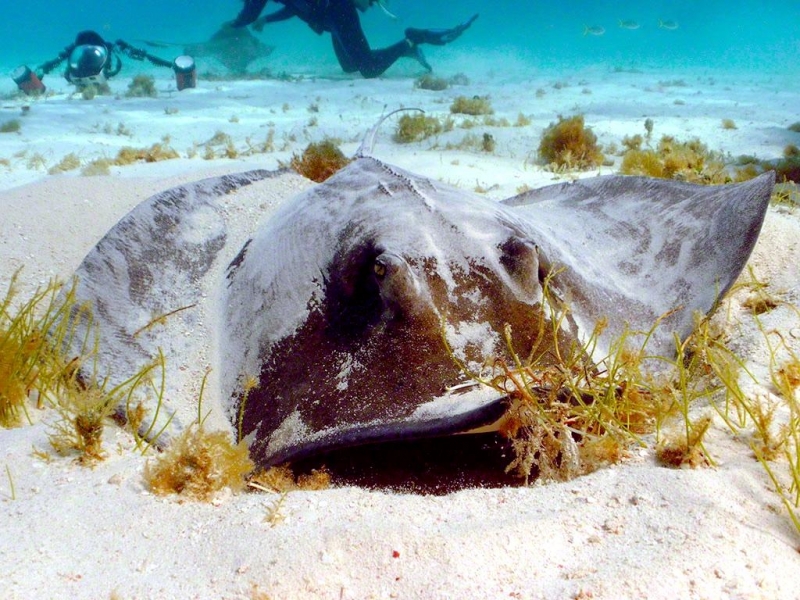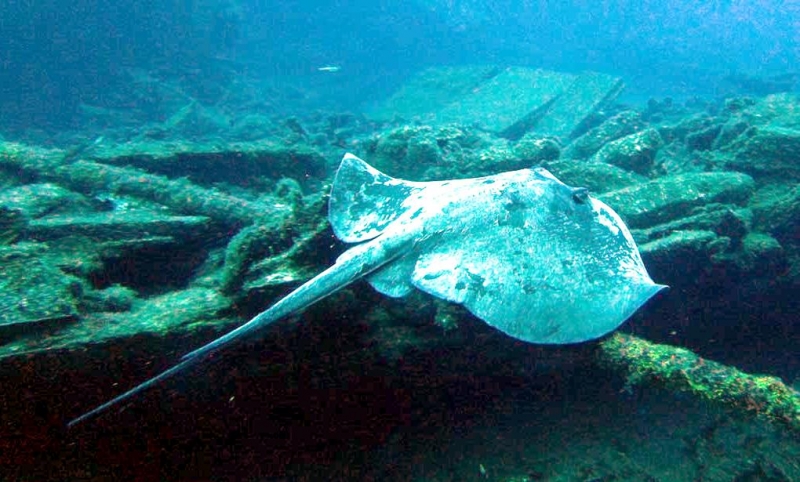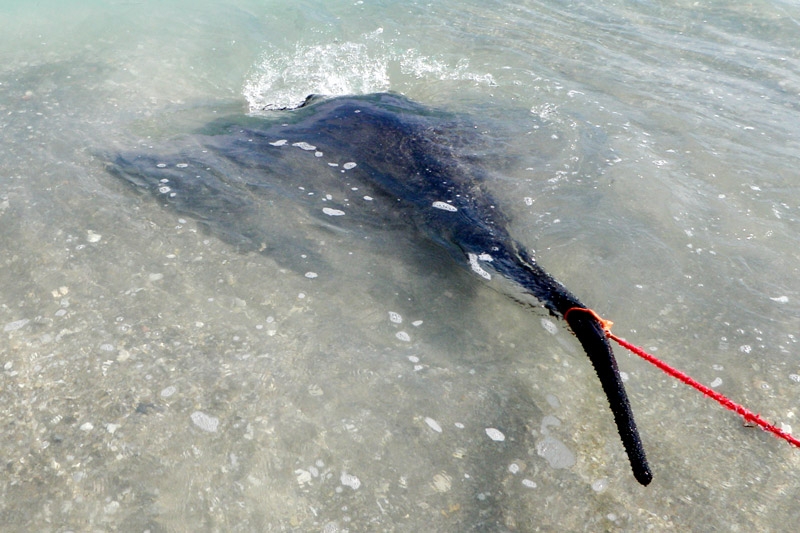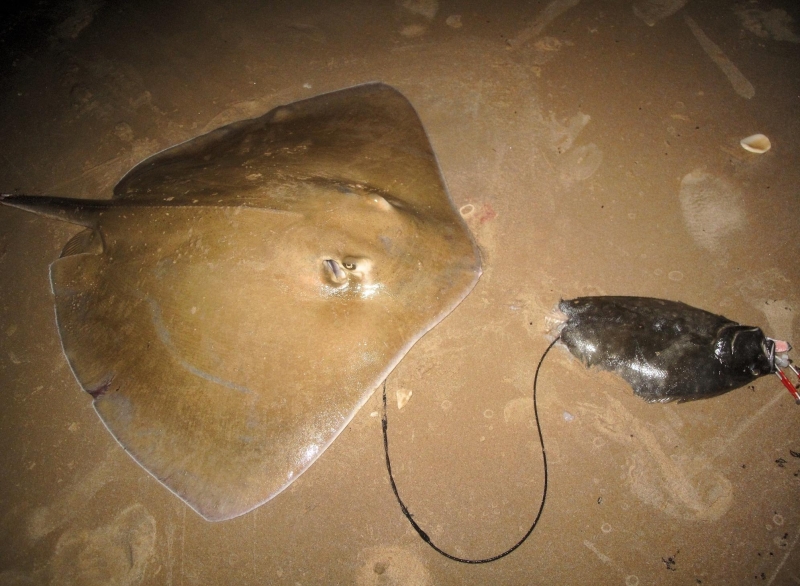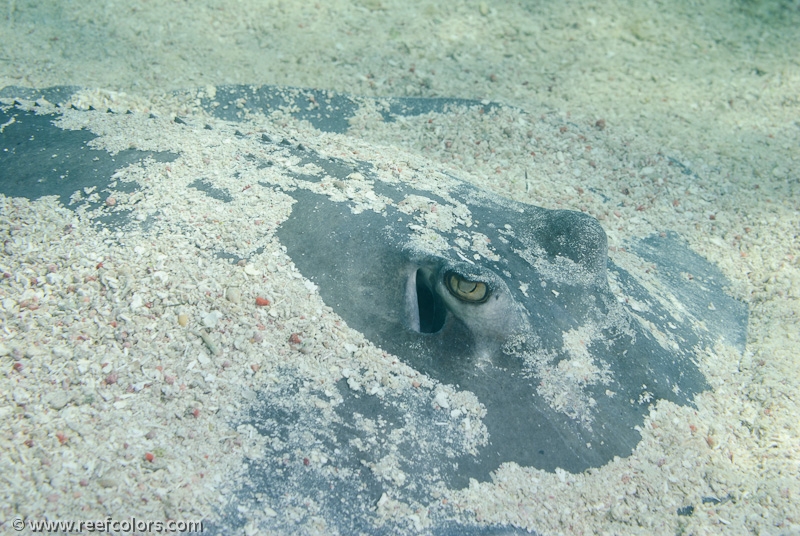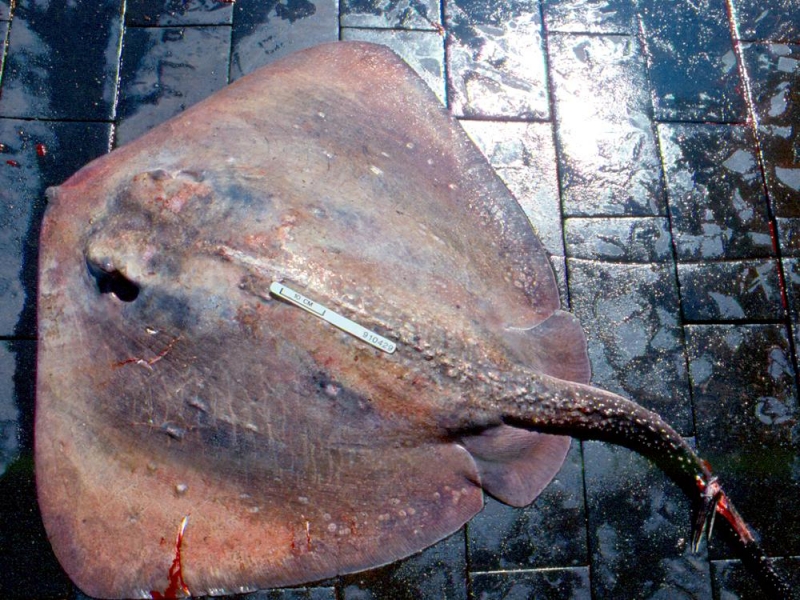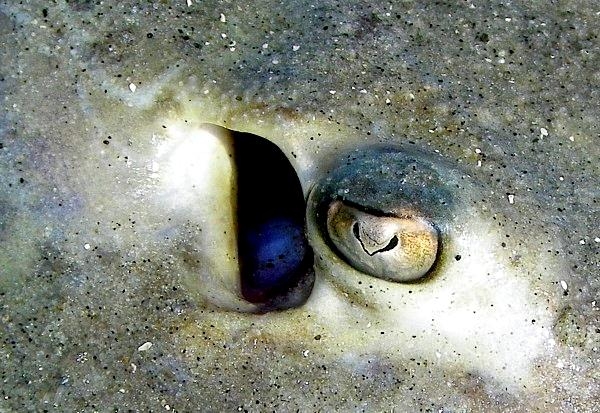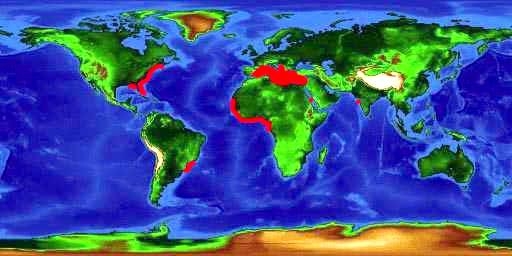“Dasyatis violacea”
As with all stingrays, the Roughtail Stingray is easily distinguished by its serrated tail spine embedded within the tough skin of its long, slender tail. Also present on the tail are a number of large, well-spaced mid-dorsal bucklers that end anterior to the tail spine, as well as numerous rows of small spines that extend to the tapered tip of the tail. The dorsal caudal fin-fold is absent and the ventral fin-fold is long and not easily seen. The disc of the Roughtail Stingray is sub-quadrangular in shape, ending in a blunt snout. Conspicuous tubercles are visible on the outer parts of the disc. Coloration is variable, ranging from olive-brown, brownish to black above and from white to yellowish-white below. The Roughtail Stingray is subtropical, ranging in the western Atlantic from off Cape Cod southward to southeastern Florida and the Gulf of Mexico. It is very rare to find this species north of Cape Cod however, it is a straggler species during summer months in the Gulf of Maine and on Georges Bank. In the eastern Atlantic, this species is widespread from the southern Bay of Biscay to the Mediterranean Sea, Madeira and around the Canary Islands. Male Roughtail Stingrays have an average width of 1.5 meters while females have an average width of 1.6 meters. Their disc length can be as long as 2.2 meters. The body of Roughtail Stingray is diamond-shaped and a long tail trails from their backside. Their whip-like tail has many rows of venomous barbs and can grow up to 2.5 times the length of the body. The outer edges of their disc bear distinctive conical tubercles.
Roughtail Stingrays usually reside in benthic environments and in marine and brackish waters. They prefer areas with sandy bottoms. In the summer, they favor bays, estuaries & coastal waters and in winter, they move away from the coast but not beyond the continental shelf. They generally swim at depths of 50 to 200 meters, but they have been seen at depths of 274 meters in the Bahamas. In the eastern Atlantic Ocean, Roughtail Stingrays remain near shore and are found at an average depth of 60 meters, while Roughtail Stingrays in the western Atlantic are found deeper at 200 meters. It tends to occur primarily above muddy or sandy bottoms. The diet of the Roughtail Stingray consists of a variety of bottom-living organisms including invertebrates such as crustaceans, mollusks, annelid worms as well as small fishes. The Roughtail Stingray is ovoviviparous, with 2–6 embryos developing within the oviduct of the female prior to being born live. Roughtail Stingrays produce relatively few young. Roughtail Stingrays in general, have 1 litter a year producing between 2 and 6 young. Embryos developing in their mother’s womb receive most of their nutriment from the histotroph, a milky substance secreted by the mother’s uterine lining. Embryos absorb nutriment through their skin & spiracles. During this time, embryos absorb the yolk sack & stalk. Roughtail Stingrays are born fully developed and relatively large (up to half the size of a full grown adult), increasing their chances of survival. Little is known about the natural mating behavior and mating system of Roughtail Stingrays. They like other stingrays, do not form monogamous pairs and they may be polygynous. All stingrays practice internal fertilization; a male inserts one of his 2 claspers into the female’s cloaca to deposit sperm. Male Roughtail Stingrays reach sexual maturity at a length of 130 to 150 centimeters and females at 140 to 160 centimeters. In females ready to reproduce, their left ovary is commonly more developed than the right. Roughtail Stingrays generally breed in Autumn or early winter. Gestation lasts 4 months and females usually give birth in April to young that measure between 34 at 37 centimeters at birth.













